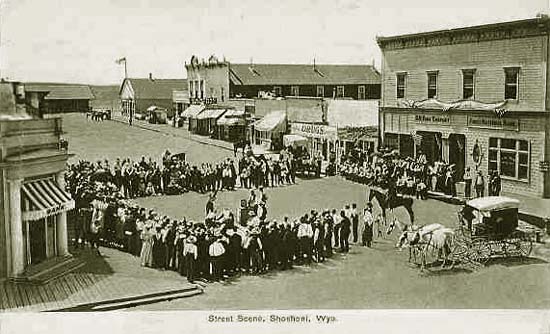
Changes in transportation methods were brought home to me again this week.
On Tuesday of this past week I drove 140 miles to
Rawlins Wyoming, worked all day, and returned home that evening. 140 miles isn't a long distance in modern terms. My route took me past
Independence Rock, where I stopped at the rest station as I always do. Then, resuming travel, down the Oregon Trail a ways further, and then across some desert country to Ten Mile Hill, a huge
topographic rise just outside of
Rawlins. Then into
Rawlins, whose Union Pacific station is depicted above.
I have no idea if this station is still there. A lot of
Rawlin's older
buildings are.
Rawlins itself, still on the main line of the UP, has seen some very hard times in recent years, but it seems to be rebounding, it's recovery fueled, as it were by natural gas exploration, as well as some wind energy development.
When I wrapped up my work, I turned around and was home in the early evening. A typical day's work for a litigator in Wyoming. It was an enjoyable trip really. Armed with my company supplied
Ipod, I finished the book on tape version of Alexander Hamilton for the third time, and listened to a selection of episodes of "The News From Lake
Woebegone".
I was to return to
Rawlins on
Thursday. I didn't, as I came down with the flu. Before somebody asks, no I don't know if it was the "Swine Flu". Whatever it was, it was fast moving, and I am over it now. I crawled into work on Thursday, but a partner of mine very graciously
volunteered to take my place, so he repeated by Tuesday travel on Thursday.
I was very grateful for this, as I had a motion hearing in Douglas Wyoming,
fifty miles a way, on Friday. I went home on Thursday and slept most of the day. The next day, however, I was back on the road to Douglas.

The courthouse depicted above is no longer in use, and I don't even know where it was. Douglas has a nice new courthouse, built, I think, in the 1970s, or maybe 80s.
This trip too was pleasant and uneventful, except for loosing my motion (rats). On the way to Douglas, I listed to an
Ipod interview of H. W. Brands, speaking about Franklin Roosevelt. On the way back, I finished up the last downloaded News From Lake Woebegone I had.
What's the point of this? Modern easy of travel.
Could I have done this a century ago? I doubt it. Even had I owned a car in 1909, there's no way that I could have traveled to
Rawlins and back in a day. I wouldn't have tried. It would
have been much more likely that, if I had to do that, I would have taken the train from Casper to North Platte NE, and then switched on to the UP line and rode to
Rawlins on Monday. I'd have stayed over in
Rawlins Tuesday evening. I wouldn't have been able to have a back to back event in
Rawlins and Douglas, in all
likelihood.
But what does that mean? In part, it probably means that a lawyer, in this context, a century ago, would have gone to
Rawlins on a Monday, and came back on a Friday. On Wednesday, he probably wouldn't have had much to do. Perhaps, were it me, I
would have gone down to
Parco for amusement. If I had to go to Douglas for Friday, I would have had to catch a night train.
What about, say 1939. I could have driven then, road travel was much improved. Even so, it would have been a bit of a brutal trip.
I suspect this also shows that, while travel is easier, life is faster paced. Probably nobody would have tried to schedule back to back travel plans like this "back in the day". Now, I'll often travel up to 600 miles in a day. If something is no further than 300 miles away, I don't stay, usually. That certainly wasn't the case at one time.

















